#read-list
Text
A fantasy read-list: A-3
Fantasy read-list
Part A: Ancient fantasy
3) Medieval fantasy - the Arthuriana
While one root of the fantasy genre lies within the mythologies of the world, the other is coming from numerous medieval tales and supernatural stories, most of them being centered around what we call today the “Arthurian myth” or the “Arthuriana”. Though, in truth, the genre of these texts is a bit bigger - it is the “Matter of Britain”, which is larger than the Arthurian texts themselves.
And we will begin our list with... French texts! It might surprise you - you might say “But aren’t Arthurian texts all English?”. No. The Matter of Britain designates all the medieval texts that are not the “Matter of Rome” or the “Matter of Thebes” (aka coming from the texts and topics of Ancient Rome and Ancient Greece). Britain is, of course, England, as in “Great-Britain”. But if there is a GREAT Britain, it means there is a “Little Britain”... And this Little Britain is none other than the Bretagne region of France, aka the north-west of France. The Arthurian myth is half-rooted in England, yes, but another half of the origins and founding texts of the Arthurian legend come from France. The famous Broceliande forest is in France, not in England.
# The founding texts of the French Arthurian literature are without a doubt the novels of Chrétien de Troyes. Considered the very first French novel of history, they created many of the well-known “Arthurian legends” of today. There is a total of five of these novels. Two are indirectly tied to the Arthurian world - Eric and Enide, Cligès. Two are right at the heart of the Arthuriana: Yvain or the Knight of the Lion, as well as Lancelot or the Knight of the Cart. And his final novel is incomplete, but it is the one that created the most famous part of the Arthurian literature: Perceval or the Story of the Grail, the first literary apparition of the famous “Holy Grail” (fun fact: the Grail wasn’t originally a cup, but a fish-plate. Go read the book, you’ll understand Xp).
# Equating and rivaling Chrétien’s novels, we find the lais of Marie de France. A “lai” is actually a short fiction typical of the Middle-Ages, something halfway between a narrative poem and a fairytale, telling short, concise, but very efficient stories. We have a LOT of lais that came to us anonymously, carrying numerous literary stories or folktales of medieval times - but in France the most famous lais are those attributed to a certain “Mary of France”. She wrote twenty or so VERY famous lais that are seen as one of the defining feature of old medieval French literature. We are talking Bisclaveret, one of the oldest werewolf stories, we are talking of the supernatural romance of Guigemar, we are talking about the twin-shenanigans of Le Fresne, about the tragic love of Chevrefoil, and about the Arthurian lai of Lanval, about a man in love with a fairy but wooed by Guinevere herself.
Mind you, there are other lais not composed by Marie de France, such as the one of Guingamor or the one of Sir Orfeo, but they are mostly anonymous.
# The works of Robert de Boron. Robert de Boron continued the work started by Chrétien de Troyes (and also took inspiration from the poet’s Wave semi-historical semi-fictional work, such as the Roman de Brut, a historical chronicle where Merlin and dragons appear), and built the next “step” in the Arthurian myth in France. Unfortunately we do not have his full work anymore, merely a fragment of his poem “Merlin” (where he presents the famous story of the “born of a demon” episode), a short “Perceval” story, and his full “Estoire du Graal ou Joseph d’Arimathie”, which is where the background of the Grail as the cup that collected Christ’s blood appears. Together they are considered as “le Petit Cycle du Graal”, “The Small Cycle of the Grail”, preceeding the following item...
# More interestingly, after the enormous success of Chrétien de Troyes’ work, there was an entire series of books that were created, remembered today as the Lancelot-Graal, or the Prose Lancelot, the Vulgate Cycle. These are five texts in prose (in opposition to Chrétien and Boron’s verse works), who continue or rewrite the previous author’s texts - these are L’Estoire del Saint Graal (L’Histoire du Saint Graal/The History of the Holy Grail), L’Estoire de Merlin (L’Histoire de Merlin/Merlin in prose), Le Lancelot (also called Lancelot in prose or Lancelot proper), La Queste del Saint Graal (The Quest of the Holy Grail), and La Mort d’Artu (The death of Artu). This cycle was followed by three prose texts known as “The Post-Vulgate Cycle” (Histoire du Saint Graal, Merlin, Queste-Mort Artu) which are merely the transcription in prose of some of Boron works, mixed with a rewrite of the “Tristan en prose”, an old novel of the Tristan and Iseult cycle (and the first that links the legendary duo with the Arthurian world).
# The Roman de Perceforest is a quite unique work designed to unite the “romans d’Alexandre” (Alexandrian novels, a big branch of medieval French literature centered around the adventure of Alexander the Great) and the Arthurian novels - more importantly, Perceforest is the oldest known literary version of the fairytale Sleeping Beauty.
# A section should be left here for the various novels involving the fairy Mélusine, one of the main characters of the French medieval legends. In fact, she is recognized (by Georges Dumézil’s work and those that continued it) as one of the two archetypal fairies of the middle-ages (the Melusinian fairy being the fairy entering the human world to live with humans, opposing the Morganian fairy who snatches humans into the otherworld). The legend of Mélusine was most notably recorded in Jean d’Arras “Roman de Mélusine”, and in Coudrette’s own “Roman de Mélusine”.
# There are many, MANY more literary works of medieval France, but to stay in the angle of “ancient fantasy” I will merely quote two more. On one side, la Chanson des quatre fils d’Aymon, a famous medieval epic which notably depicts the figure of Maugis the Enchanter, the other main sorcerer of medieval texts alongside Merlin (he has his own poem, La Chanson de Maugis d’Aigremont). On the other, the one one, the classic, the best-seller, the unavoidable Roman de Renart, the Novel of Reynart, the tentacular set of texts depicting the numerous adventures of the most famous European trickster in an animalistic parody of the Arthurian world.
If we jump outside of France to England, we have a different set of texts:
# The works of Geoffrey of Monmouth. This man wrote some of the earliest works part of the “Arthurian myth”, and from which a lot of elements were taken to create the “Arthuriana”. While his most famous work is “Historia Regum Britanniae”, a semi-historical chronicle of the kings of Britain which contains one of the earliest appearance of King Arthur as we know him today, he also wrote two texts fundamental to the figure of Merlin: Prophetiae Merlini, and Vita Merlini.
# Otia Imperialia, by Gervase of Tilbury. It was a work created as a gift to emperor Otto V, and it was supposed to be an encyclopedia of geographical, historical and scientific matters - but it is actually containing a LOT of mythical and legendary elements, including entire part of the “Arthurian myth” presented as historical facts - hence its latter name “The Book of Marvels”.
# Of course, we can’t list the major Arthuriana English works without talking about the most famous one: “Le Morte d’Arthur”, the final result of the “evolution” of the Arthurian myth. Thomas Malory’s attempt at creating a complete legend uniting all of the English and French Arthurian texts (though heavily inspired by the Lancelot-Graal cycle I described above). This text became the “definitive Arthurian text” in England for a very long time - and in more recent days, it was the main inspiration for the famous Arthurian novel “The Once and Future King” by T. H. White.
And while the Arthurian corpus is mostly made of English and French texts, you also have Arthuriana sources in other European countries - such as in Germany, where you can find Lanzelet, by Ulrich von Zazhikhoven, which marks the first apparition of Lancelot in German literature.
#fantasy read-list#read list#fantasy#read-list#arthurian myth#medieval literature#medieval fantasy#arthurian texts#french middle-ages#french literature#arthuriana#arthurian literature#ancient fantasy
52 notes
·
View notes
Text
29/04/24: reblogs have been turned off for a few days. Check replies.
17/12/23 this masterlist has been completely, vetted, revamped and reformatted with free access to all reading and viewing material. It will be updated and edited periodically so please try and reblog the original post if you're able.
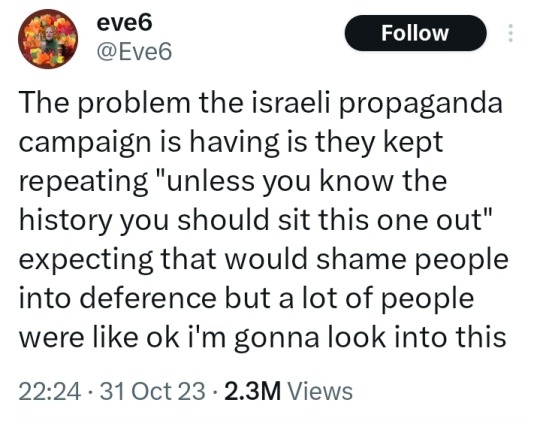
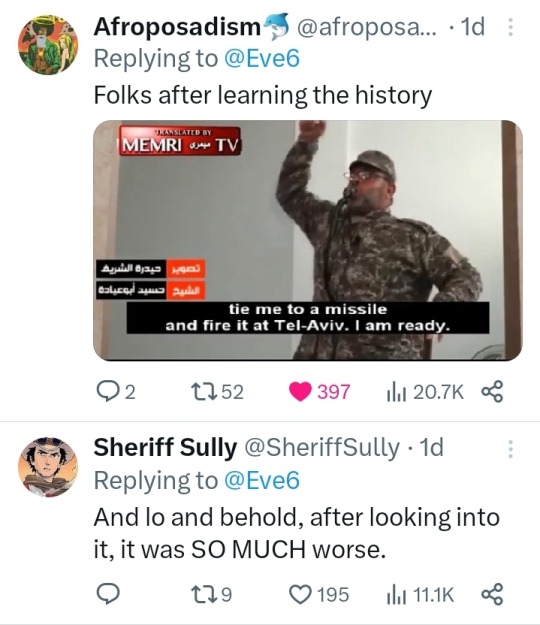

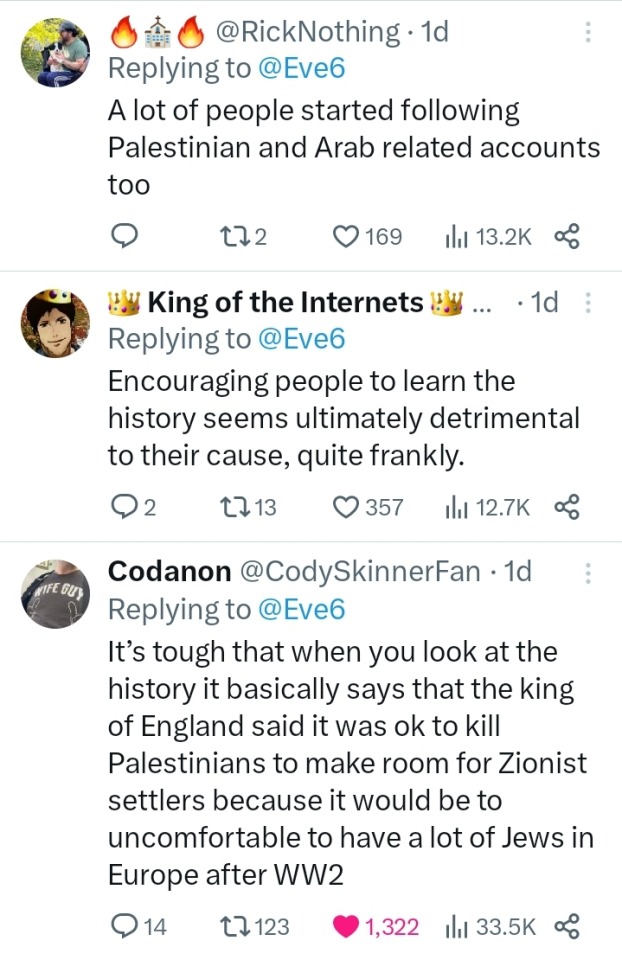
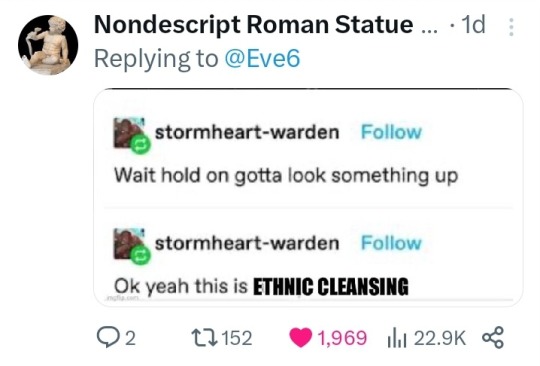
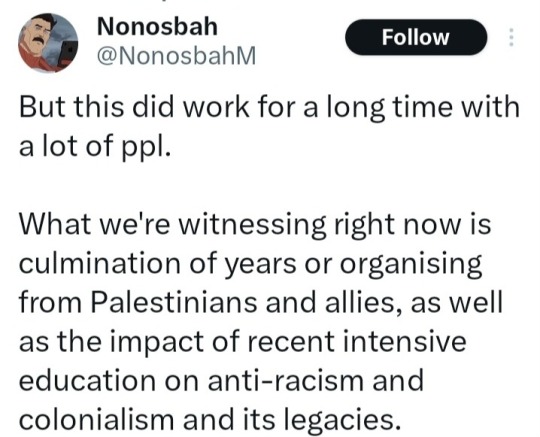
The Big Damn List Of Stuff They Said You Didn't Know
(Yes, it's a lot. Just choose your preferred medium and then pick one.)
Podcasts
Backgrounders and Quick Facts
Interactive Maps
Teach-Out Resources
Reading Material (free)
Films and Documentaries (free)
Non-Governmental Organizations
Social Media
How You Can Help
Podcasts
Cocktails & Capitalism: The Story of Palestine Part 1, Part 3
It Could Happen Here: The Cheapest Land is Bought with Blood, Part 2, The Balfour Declaration
Citations Needed: Media narratives and consent manufacturing around Israel-Palestine and the Gaza Siege
The Deprogram: Free Palestine, ft. decolonizatepalestine.com.
Backgrounders and Quick Facts
The Palestine Academy: Palestine 101
Institute for Middle East Understanding: Explainers and Quick Facts
Interactive Maps
Visualizing Palestine
Teach-Out Resources
1) Cambridge UCU and Pal Society
Palestine 101
Intro to Palestine Film + Art + Literature
Resources for Organising and Facilitating)
2) The Jadaliya YouTube Channel of the Arab Studies Institute
Gaza in Context Teach-in series
War on Palestine podcast
Updates and Discussions of news with co-editors Noura Erakat and Mouin Rabbani.
3) The Palestine Directory
History (virtual tours, digital archives, The Palestine Oral History Project, Documenting Palestine, Queering Palestine)
Cultural History (Palestine Open Maps, Overdue Books Zine, Palestine Poster Project)
Contemporary Voices in the Arts
Get Involved: NGOs and campaigns to help and support.
3) PalQuest Interactive Encyclopedia of the Palestine Question.
4) The Palestine Remix by Al Jazeera
Books and Articles
Free reading material
My Gdrive of Palestine/Decolonization Literature (nearly all the books recommended below + books from other recommended lists)
Five free eBooks by Verso
Three Free eBooks on Palestine by Haymarket
LGBT Activist Scott Long's Google Drive of Palestine Freedom Struggle Resources
Recommended Reading List
Academic Books
Edward Said (1979) The Question of Palestine, Random House
Ilan Pappé (2002)(ed) The Israel/Palestine Question, Routledge
Ilan Pappé (2006) The Ethnic Cleansing of Palestine, OneWorld Publications
Ilan Pappé (2011) The Forgotten Palestinians: A History of the Palestinians in Israel, Yale University Press
Ilan Pappé (2015) The Idea of Israel: A History of Power and Knowledge, Verso Books
Ilan Pappé (2017) The Biggest Prison On Earth: A History Of The Occupied Territories, OneWorld Publications
Ilan Pappé (2022) A History of Modern Palestine, Cambridge University Press
Rosemary Sayigh (2007) The Palestinians: From Peasants to Revolutionaries, Bloomsbury
Andrew Ross (2019) Stone Men: the Palestinians who Built Israel, Verso Books
Rashid Khalidi (2020) The Hundred Years’ War on Palestine: A History of Settler Colonialism and Resistance 1917–2017
Ariella Azoulay (2011) From Palestine to Israel: A Photographic Record of Destruction and State Formation, 1947-1950, Pluto Press
Ariella Azoulay and Adi Ophir (2012) The One-State Condition: Occupation and Democracy in Israel/Palestine, Stanford University Press.
Jeff Halper (2010) An Israeli in Palestine: Resisting Dispossession, Redeeming Israel, Pluto Press
Jeff Halper (2015) War Against the People: Israel, the Palestinians and Global Pacification
Jeff Halper (2021) Decolonizing Israel, Liberating Palestine: Zionism, Settler Colonialism, and the Case for One Democratic State, Pluto Press
Anthony Loewenstein (2023) The Palestine Laboratory: How Israel exports the Technology of Occupation around the World
Noura Erakat (2019) Justice for Some: Law and the Question of Palestine, Stanford University Press
Neve Gordon (2008) Israel’s Occupation, University of California Press
Joseph Massad (2006) The Persistence of the Palestinian Question: Essays on Zionism and the Palestinians, Routledge
Memoirs
Edward Said (1986) After the Last Sky: Palestine Lives, Columbia University PEdward Saidress
Edward Said (2000) Out of Place; A Memoir, First Vintage Books
Mourid Barghouti (2005) I saw Ramallah, Bloomsbury
Hatim Kanaaneh (2008) A Doctor in Galilee: The Life and Struggle of a Palestinian in Israel, Pluto Press
Raja Shehadeh (2008) Palestinian Walks: Into a Vanishing Landscape, Profile Books
Ghada Karmi (2009) In Search of Fatima: A Palestinian Story, Verso Books
Vittorio Arrigoni (2010) Gaza Stay Human, Kube Publishing
Ramzy Baroud (2010) My Father Was a Freedom Fighter: Gaza's Untold Story, Pluto Press
Izzeldin Abuelaish (2011) I Shall Not Hate: A Gaza Doctor’s Journey on the Road to Peace and Human Dignity, Bloomsbury
Atef Abu Saif (2015) The Drone Eats with Me: A Gaza Diary, Beacon Press
Anthologies
Voices from Gaza - Insaniyyat (The Society of Palestinian Anthropologists)
Letters From Gaza • Protean Magazine
Salma Khadra Jayyusi (1992) Anthology of Modern Palestinian Literature, Columbia University Press
ASHTAR Theatre (2010) The Gaza Monologues
Refaat Alreer (ed) (2014) Gaza Writes Back, Just World Books
Refaat Alreer, Laila El-Haddad (eds) (2015) Gaza Unsilenced, Just World Books
Cate Malek and Mateo Hoke (eds)(2015) Palestine Speaks: Narrative of Life under Occupation, Verso Books
Jehad Abusalim, Jennifer Bing (eds) (2022) Light in Gaza: Writings Born of Fire, Haymarket Books
Short Story Collections
Ghassan Kanafani, Hilary Kilpatrick (trans) (1968) Men in the Sun and Other Palestinian Stories, Lynne Rienner Publishers
Ghassan Kanafani, Barbara Harlow, Karen E. Riley (trans) (2000) Palestine’s Children: Returning to Haifa and Other Stories, Lynne Rienner Publishers
Atef Abu Saif (2014) The Book of Gaza: A City in Short Fiction, Comma Press
Samira Azzam, Ranya Abdelrahman (trans) (2022) Out Of Time: The Collected Short Stories of Samira Azzam
Sonia Sulaiman (2023) Muneera and the Moon; Stories Inspired by Palestinian Folklore
Essay Collections
Edward W. Said (2000) Reflections on Exile and Other Essays, Harvard University Press
Salim Tamari (2008) Mountain against the Sea: Essays on Palestinian Society and Culture, University of California Press
Fatma Kassem (2011) Palestinian Women: Narratives, histories and gendered memory, Bloombsbury
Ramzy Baroud (2019) These Chains Will Be Broken: Palestinian Stories of Struggle and Defiance in Israeli Prisons, Clarity Press
Novels
Sahar Khalifeh (1976) Wild Thorns, Saqi Books
Liyana Badr (1993) A Balcony over the Fakihani, Interlink Books
Hala Alyan (2017) Salt Houses, Harper Books
Susan Abulhawa (2011) Mornings in Jenin, Bloomsbury
Susan Abulhawa (2020) Against the Loveless World, Bloomsbury
Graphic novels
Joe Sacco (2001) Palestine
Joe Sacco (2010) Footnotes in Gaza
Naji al-Ali (2009) A Child in Palestine, Verso Books
Mohammad Sabaaneh (2021) Power Born of Dreams: My Story is Palestine, Street Noise Book*
Poetry
Fady Joudah (2008) The Earth in the Attic, Sheridan Books,
Ghassan Zaqtan, Fady Joudah (trans) (2012) Like a Straw Bird It Follows Me and Other Poems, Yale University Press
Hala Alyan (2013) Atrium: Poems, Three Rooms Press*
Mohammed El-Kurd (2021) Rifqa, Haymarket Books
Mosab Abu Toha (2022) Things You May Find Hidden in My Ear: Poems from Gaza, City Lights Publishers
Tawfiq Zayyad (2023) We Are Here to Stay, Smokestack Books*
The Works of Mahmoud Darwish
Poems
Rafeef Ziadah (2011) We Teach Life, Sir
Nasser Rabah (2022) In the Endless War
Refaat Alareer (2011) If I Must Die
Hiba Abu Nada (2023) I Grant You Refuge/ Not Just Passing
[All books except the ones starred are available in my gdrive. I'm adding more each day. But please try and buy whatever you're able or borrow from the library. Most should be available in the discounted Free Palestine Reading List by Pluto Press, Verso and Haymarket Books.]
Human Rights Reports & Documents
Information on current International Court of Justice case on ‘Legal Consequences arising from the Policies and Practices of Israel in the Occupied Palestinian Territory, including East Jerusalem’
UN Commission of Inquiry Report 2022
UN Special Rapporteur Report on Apartheid 2022
Amnesty International Report on Apartheid 2022
Human Rights Watch Report on Apartheid 2021
Report of the United Nations Fact-Finding Mission on the Gaza Conflict’ 2009 (‘The Goldstone Report’)
Advisory Opinion on the Legal Consequences of the Construction of a Wall in the Occupied Palestinian Territory, International Court of Justice, 9 July 2004
Films
Documentaries
Jenin, Jenin (2003) dir. Mohammed Bakri
Massacre (2005) dir. Monica Borgmann, Lokman Slim, Hermann Theissen
Slingshot HipHop (2008) dir. Jackie Reem Salloum
Waltz with Bashir (2008) dir. Ari Folman † (also on Amazon Prime)
Tears of Gaza (2010) dir. Vibeke Løkkeberg (also on Amazon Prime)
5 Broken Cameras (2011) dir. Emad Burnat (also on Amazon Prime)
The Gatekeepers (2012) dir. Dror Moreh (also on Amazon Prime)
The Great Book Robbery (2012) | Al Jazeera English
Al Nakba (2013) | Al Jazeera (5-episode docu-series)
The Village Under the Forest (2013) dir. Mark J. Kaplan
Where Should The Birds Fly (2013) dir. Fida Qishta
Naila and the Uprising (2017) (also on Amazon Prime)
GAZA (2019) dir. Andrew McConnell and Garry Keane
Gaza Fights For Freedom (2019) dir. Abby Martin
Little Palestine: Diary Of A Siege (2021) dir. Abdallah Al Khatib
Palestine 1920: The Other Side of the Palestinian Story (2021) | Al Jazeera World Documentary
Gaza Fights Back (2021) | MintPress News Original Documentary | dir. Dan Cohen
Innocence (2022) dir. Guy Davidi
Short Films
Fatenah (2009) dir. Ahmad Habash
Gaza-London (2009) dir. Dina Hamdan
Condom Lead (2013) dir. Tarzan Nasser, Arab Nasser
OBAIDA (2019) | Defence for Children Palestine
Theatrical Films
Divine Intervention (2002) | dir. Elia Suleiman (also on Netflix)
Paradise Now (2005) dir Hany Abu-Assad (also on Amazon Prime)
Lemon Tree (2008) (choose auto translate for English subs) (also on Amazon Prime)
It Must Be Heaven (2009) | dir. Elia Suleiman †
The Promise (2010) mini-series dir. Peter Kosminsky (Part 1, Part 2, Part 3, Part 4)
Habibi (2011)* dir. Susan Youssef
Omar (2013)* dir. Hany Abu-Assad †
3000 Nights (2015)* dir. Mai Masri
Foxtrot (2017) dir. Samuel Maoz (also on Amazon Prime)
The Time that Remains (2019) dir. Elia Suleiman †
Gaza Mon Amour (2020) dir. Tarzan Nasser, Arab Nasser †
The Viewing Booth (2020) dir. Ra'anan Alexandrowicz (on Amazon Prime and Apple TV)
Farha (2021)* | dir. Darin J. Sallam
Palestine Film Institute Archive
All links are for free viewing. The ones marked with a star (*) can be found on Netflix, while the ones marked † can be downloaded for free from my Mega account.
If you find Guy Davidi's Innocence anywhere please let me know, I can't find it for streaming or download even to rent or buy.
In 2018, BDS urged Netflix to dump Fauda, a series created by former members of IOF death squads that legitimizes and promotes racist violence and war crimes, to no avail. Please warn others to not give this series any views. BDS has not called for a boycott of Netflix. ]
Planning to link two separate posts here listing all the books in my drive and all the films I couldn't include here. Check back for updates.
NGOs
The Boycott, Divestment, Sanctions (BDS) Movement
Medical Aid for Palestinians
Euro-Mediterranean Human Rights Monitor
Palestine Defence for Children International
Palestinian Feminist Collective
Al-Shabaka: The Palestinian Policy Network
Addameer Prisoner Support and Human Rights Association
Institute for Palestine Studies
Al Haq
Artists for Palestine
The Palestine Museum
Jewish Currents
B’Tselem
DAWN
Social Media
Palestnians on Tumblr
@el-shab-hussein
@killyfromblame
@apollos-olives
@fairuzfan
@palipunk
@sar-soor
@nabulsi
@ibtisams
@wearenotjustnumbers2
@90-ghost (is in Gaza right now. Please donate to his GFM and boost it.)
@tamarrud
Allies and advocates (not Palestinian)
@bloglikeanegyptian beautiful posts that read like op-eds
@vyorei daily news roundups
@luthienne resistance through prose
@decolonize-the-left scoop on the US political plans and impacts
@feluka
(Please don't expect any of these blogs to be completely devoted to Palestine allyship; they do post regularly about it but they're still personal blogs and post whatever else they feel like. Do not harrass them.)
Gaza journalists
Motaz Azaiza IG: @motaz_azaiza | Twitter: @azaizamotaz9 | TikTok: _motaz.azaiza (left Gaza as of Jan 23)
Bisan Owda IG and TikTok: wizard_bisan1 | Twitter: @wizardbisan
Saleh Aljafarawi IG: @saleh_aljafarawi | Twitter: @S_Aljafarawi | TikTok: @saleh_aljafarawi97
Plestia Alaqad IG: @byplestia | TikTok: @plestiaaqad (left Gaza)
Wael Al-Dahdouh IG: @wael_eldahdouh | Twitter: @WaelDahdouh (left Gaza as of Jan 13)
Hind Khoudary IG: @hindkhoudary | Twitter: @Hind_Gaza
Ismail Jood IG and TikTok: @ismail.jood (announced end of coverage on Jan 25)
Yara Eid IG: @eid_yara | Twitter: @yaraeid_
Eye on Palestine IG: @eye.on.palestine | Twitter: @EyeonPalestine | TikTok: @eyes.on.palestine
Muhammad Shehada Twitter: @muhammadshehad2
(Edit: even though some journos have evacuated, the footage up to the end of their reporting is up on their social media, and they're also doing urgent fundraisers to get their families and friends to safety. Please donate or share their posts.)
News organisations
The Electronic Intifada Twitter: @intifada | IG: @electronicintifada
Quds News Network Twitter and Telegram: @QudsNen | IG: @qudsn (Arabic)
Times of Gaza IG: @timesofgaza | Twitter: @Timesofgaza | Telegram: @TIMESOFGAZA
The Palestine Chronicle Twitter: @PalestineChron | IG: @palestinechron | @palestinechronicle
Al-Jazeera Twitter: @AJEnglish | IG and TikTok: @aljazeeraenglish, @ajplus
Middle East Eye IG and TikTok: @middleeasteye | Twitter: @MiddleEastEye
Democracy Now Twitter and IG: @democracynow TikTok: @democracynow.org
Haaretz* Twitter: @Haaretz | IG: haaretzcom
Mondoweiss IG and TikTok: @mondoweiss | Twitter: @Mondoweiss
The Intercept Twitter and IG: @theintercept
MintPress Twitter: @MintPressNews | IG: mintpress
Novara Media Twitter and IG: @novaramedia
Truthout Twitter and IG: @truthout
[*Please note that Haaretz is an Israeli Liberal Zionist newspaper and heavily propagandized against Palestine. It's included here only as a Zionist critic of the Israeli government and IDF from within Israel.]
Palestnians on Other Social Media
Mouin Rabbani: Middle East analyst specializing in the Arab-Israeli conflict and Palestinian affairs. Twitter: @MouinRabbani
Noura Erakat: Legal scholar, human rights attorney, specialising in Israeli–Palestinian conflict. Twitter: @4noura | IG: @nouraerakat | (http://www.nouraerakat.com/)
Hebh Jamal: Journalist in Germany. IG and Twitter: @hebh_jamal
Ghada Sasa: PhD candidate in International Relations, green colonialism, and Islam in Canada. Twitter: @sasa_ghada | IG: @ghadasasa48
Taleed El Sabawi: Assistant professor of law and researcher in public health. Twitter: @el_sabawi | IG
Lexi Alexander: Filmmaker and activist. Twitter: @LexiAlex | IG: @lexialexander1
Mariam Barghouti: Writer, blogger, researcher, and journalist. Twitter: @MariamBarghouti | IG: @mariambarghouti
Rasha Abdulhadi: Queer poet, author and cultural organizer. Twitter: @rashaabdulhadi
Mohammed el-Kurd: Writer and activist from Jerusalem. IG: @mohammedelkurd | Twitter: @m7mdkurd
Ramy Abdu: Founder and Chairman of the Euro-Mediterranean Human Rights Monitor. Twitter: @RamyAbdu
Subhi: Founder of The Palestine Academy website. IG: @sbeih.jpg |TikTok @iamsbeih | Twitter: @iamsbeih
Allies
Lowkey (Kareem Dennis): Rapper, activist, video and podcast host for MintPress. Twitter: @LowkeyOnline IG: @lowkeyonline
Francesca Albanese: UN Special Rapporteur on the Occupied Territories. Twitter: @FranceskAlbs
Sana Saeed: Journalist and media critic, host and senior producer at Al-Jazeera Plus. IG: @sanaface | Twitter: @SanaSaeed
Shailja Patel: Poet, playwright, activist, founding member of Kenyans For Peace, Truth and Justice. Twitter: @shailjapatel
Jairo I. Fúnez-Flores: Researcher in curriculum studies, decolonial theory, social movements. Twitter: @Jairo_I_Funez
Jack Dodson: Journalist and Filmmaker. Twitter: @JackDodson IG: @jdodson4
Imani Barbarin: Writer, public speaker, and disability rights activist. IG: @crutches_and_spice | Twitter: @Imani_Barbarin | TikTok: @crutches_and_spice
Jewish Allies
Katie Halper: US comedian, writer, filmmaker, podcaster, and political commentator. IG and Twitter: @kthalps
Amanda Gelender: Writer. Twitter: @agelender | (https://agelender.medium.com/)
Yoav Litvin: Jerusalem-born Writer and Photographer. IG and Twitter: @nookyelur | (yoavlitvin.com)
Alana Lentin: Professor of Cultural and Social Analysis at Western Sydney University. Twitter: @alanalentin
Gideon Levy: anti-Zionist Israeli journalist and activist. Twitter: @gideonle
How You Can Help Palestine
How to be an Ally 101
URGENT‼️📢: Global Strike Guide
If any links are broken let me know. Or pull up the current post to check whether it's fixed.
"Knowledge is Israel's worst enemy. Awareness is Israel's most hated and feared foe. That's why Israel bombs a university: it wants to kill openness and determination to refuse living under injustice and racism."
— Dr. Refaat Alareer, (martyred Dec 6, 2023)
From River To The Sea Palestine Will Be Free 🇵🇸🇵🇸🇵🇸
-----
Edit 1: took the first video down because turns out the animator is a terf and it links to her blog. Really sorry for any distress.
Edit 2: All recommended readings + Haymarket recommendations + essential decolonization texts have been uploaded to my linked gdrive. I will adding more periodically. Please do buy or check them out from the library if possible, but this post was made for and by poor and gatekept Global South bitches like me.
Some have complained about the memes being disrespectful. You're actually legally obligated to make fun of Israeli propaganda and Zionists. I don't make the rules.
Edit 3: "The river to the sea" does not mean the expulsion of Jews from Palestine. Believing that is genocide apologia.
Edit 4: Gazans have specifically asked us to put every effort into pushing for a ceasefire instead of donations. "Raising humanitarian aid" is a grift Western governments are pushing right now to deflect from the fact that they're sending billions to Israel to keep carpet bombing Gazans. As long as the blockades are still in place there will never be enough aid for two million people. (UPDATE: PLEASE DONATE to the Gazan's GoFundMe fundraisers to help them buy food and get out of Rafah into Egypt. E-SIMs, food and medical supplies are also essential. Please donate to the orgs linked in the How You Can Help. Go on the strikes. DO NOT STOP PROTESTING.)
Edit 5: Google drive link for academic books folder has been fixed. Also have added a ton of resources to all the other folders so please check them out.
Edit 6: Added interactive maps, Jadaliya channel, and masterlists of donation links and protest support and of factsheets.
The twitter accounts I reposted as it was given to me and I just now realized it had too many Israeli voices and almost none of the Palestinians I'm following, so it's being edited. Check back for more. I also removed sources like Jewish Voices of Peace and Breaking the Silence that do good work but have come under fair criticism from Palestinians.
Edit 7: Complete reformatting
Edit 8: Complete revamping of the social media section. It now reflects my own following list.
Edit 9: removed some more problematic people from the allies list. Remember that the 2SS is a grift that's used to normalize violence and occupation, kids. Supporting the one-state solution is lowest possible bar for allyship. It's "Free Palestine" not "Free half of Palestine and hope Israel doesn't go right back to killing them".
Edit 10: added The Palestine Directory + Al Jazeera documentary + Addameer. This "100 links per post" thing sucks.
Edit 11: more documentaries and films
Edit 12: reformatted reading list
Edit 13: had to remove @palipunk's masterlist to add another podcast. It's their pinned post and has more resources Palestinian culture and crafts if you want to check it out
#free palestine#palestine resources#palestine reading list#decolonization#israel palestine conflict#israel palestine war#british empire#american imperialism#apartheid#social justice#middle east history#MENA#arab history#anti zionism#palestinian art#palestinian history#palestinian culture#palestinian genocide#al nakba#ethnic cleansing#war crimes#racism#imperialism#colonialism#british colonialism#knee of huss#ask to tag#Youtube
77K notes
·
View notes
Text
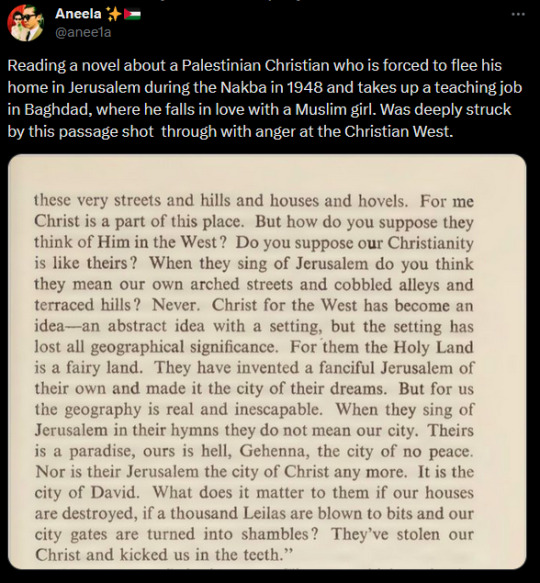
thinking about this today
#OP said the book is hunters in a narrow street#by jabra ibrahim jabra#going on my to read list#palestine
21K notes
·
View notes
Text
what's a book you read as a teenager that was so magical and personally profound to you it literally changed your life, doesnt matter if the book was actually well written or not. mine's probably the catcher in the rye
44K notes
·
View notes
Text
To "Chilchuck, party dad" and "Chilchuck, professional hater" and even "Chilchuck, union man" let me add: Chilchuck, HR manager.

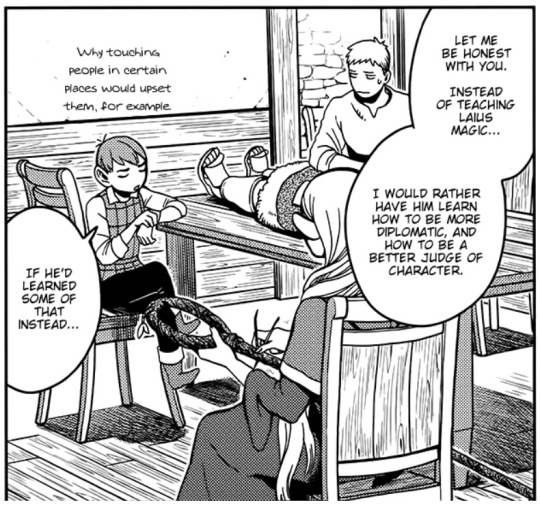
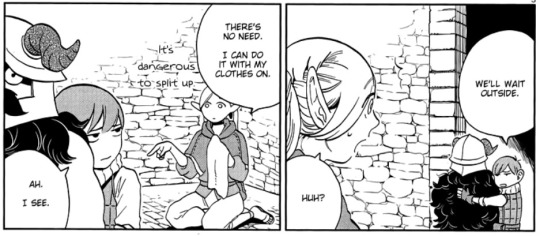


Does he like the position of HR manager? Is he even any good at it? Haha well those are different questions entirely.

But the only other members with Normal ideas about dungeoneering as a job have quit, and the remaining bunch of autists with their wildly eccentric and badly communicated personal goals/boundaries are RAPIDLY "we're like a family here~"ing themselves towards catastrophic misunderstandings, workplace incidents, and/or federal crimes. So for all that he's private or abrasive...
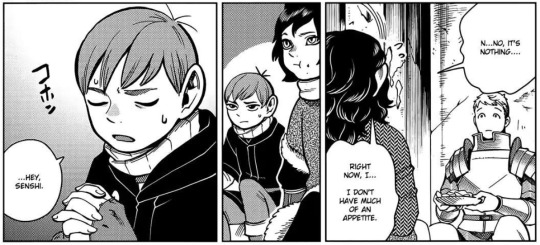
...he spends a lot of energy trying to protect everyone's boundaries and keep the peace. Not just in a ~found family~ loving way, but in a more fundamental way, understanding that work takes trust, and trust takes work.
#he even lists ''mediator'' in the list of jobs when he gives his backstory to senshi but I think people read that solely as a union thing#chilchuck#dungeon meshi
6K notes
·
View notes
Text
louise glück was an tremendous poet in her own life and also taught, advised, and nurtured uncountable other poets. her picking richard siken’s crush for the yale younger poets prize is a well known fact, but she selected a number of other poets for publication during her tenure as the contest judge that i think are worth knowing.
peter streckfus, cuckoo (2003)
richard siken, crush (2004)
jay hopler, green squall (2005)
jessica fisher, frail-craft (2006)
fady joudah, the earth in the attic (2007)
arda collins, it is daylight (2008)
ken chen, juvenilia (2009)
katherine larson, radial symmetry (2010)
poetry is a community! read her—and also read the poets she wanted to promote.
#sitting in bed with my yale anthology#reading lists are everywhere if you know where to look#katherine larson is a personal favorite of mine#fady joudah might be of particular interest; his parents are palestinian refugees#poetry#poetry recs#louise glück#mine
6K notes
·
View notes
Text
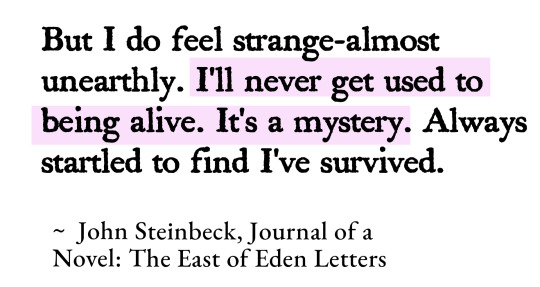
#John Steinbeck#Journal of a Novel#The East of Eden Letters#literature#lit#english literature#classic lit#academia#soft academia#dark academia aesthetic#chaotic academia#romantic academia#reading#to read list#poet#readblr#quotes#quote#booklr#quoteblr#litblr#currently reading#text#dark academia#spilled thoughts#dark aesthetic#spilled ink#spilled words#classic literature#poem
38K notes
·
View notes
Text
it’s very easy to tell the good satires and pastiches from the bad ones because the bad ones are too afraid to live within the form. like if you are doing work with fairy tales and you are refusing to look closer at the underlying logic and unspoken rules of what can seem at first to be a senseless form, you are not going to create meaningful work. to borrow a turn of phrase originally used by maria tatar, if you refuse to enter “the house of fairy tale” as anything more than a gawking tourist, you will miss the particular order to the way the table is set, the rooms that are locked vs the rooms that are simply difficult to enter, the set of the floorboards and the position of the furniture. whatever you build will then be a gilded imitation of how you believe the house of fairy tale ought to look, the table set according to your educated specifications and every door open. there can be no interrogation of themes from a writer who views the form as beneath them!
#it speaks!#sondheim understood this with into the woods; the deconstruction of narrative itself is able to happen because we are able to believe in ->#<- the fairy tale logic he employs prior to this.#its a kids book but adam gidwitz understood this with a tale dark and grimm!!#cant speak for the rest of the series but that first book uses the absurdity of fairy tale logic to speak about the absurdity of ->#<- adulthood and the pedagogy present in many fairy tales to discuss the ways parents hurt their children.#rule of threes is important but theres so much on my list ive yet to read; always welcome recommendations.#fairy tales#into the woods#<- this comes from musings on how successfully i feel that musical functions so it gets the tag
3K notes
·
View notes
Text
List of “I still…” prompts
I still smell the traces of your scent on my bedsheets; my clothes; my pillowcase
I still remember your favourite songs; the way you’d sing them out loud thinking no one’s listening, and then getting flustered when you realised I heard you
I still remember all of your little quirks in which I’ve always found so endearing to me, but you always thought were annoying
I still remember the feel of you under my palms; every curve, every line
I still have your number memorised, like the back of my hand
I still remember your smile, the soft quirk to it. How could I not? It’s ingrained in the back of my mind, even though I wish it wasn’t
I still can’t get you out of my mind even though I’m probably long gone from yours
I still remember how you’d laugh at my jokes even though they didn’t make any sense to anyone else
I still have our inside jokes kept somewhere in the back of my mind
I still remember how you taste
I still remember how you sound; your sweet voice you told me you hated when you had to listen back to it over voice recording
I still remember how you’d be there for me, through both the thick and the thin
I still remember how you told me you’d always be there for me
I still remember how our love was supposed to be unconditional… until it wasn’t
I still remember how things went down south. Where did things go wrong? I still don’t really understand what happened…
I still think about you, day in, day out
I still miss you
I still want you
I still need you
And I… I still love you, even after all of this time
#this doesn't read like a prompt list the further it goes but anyways lkfn#angst prompts#prompts#otp prompts#writing prompts
5K notes
·
View notes
Text
A fantasy read-list: A-2
Fantasy read-list
Part A: Ancient fantasy
2) Mythological fantasy (other mythologies)
Beyond the Greco-Roman mythology, which remained the main source and main influence over European literature for millenia, two other main groups of myths had a huge influence over the later “fantasy” genres.
# On one side, the mythology of Northern Europe (Nordic/Scandinavian, Germanic, but also other ones such as Finnish). When it comes to Norse mythology, two works are the first names that pop-up: the Eddas. Compilations of old legends and mythical poems, they form the main sources of Norse myths. The oldest of the two is the Poetic Edda, or Elder Edda, an ancient compilation of Norse myths and legends in verse. The second Edda is the Prose Edda, so called because it was written in prose by the Icelandic scholar Snorri Sturluson (alternate names being Snorri’s Edda or the Younger Edda). Sorri Sturluson also wrote numerous other works of great importance, such as Heimskringla (a historical saga depicting the dynasties of Norse kings, starting with tales intermingled with Norse mythology, before growing increasingly “historically-accurate”) or the Ynglinga saga - some also attributed to him the Egil’s Saga.
Other “tales of the North” include, of course, Beowulf, one of the oldest English poems of history, and the most famous version of the old Germanic legend of the hero Beowulf ; the Germanic Völsunga saga and Nibelungenlied ; as well as the Kalevala - which is a bit late, I’ll admit, it was compiled in the 19th century, so it is from a very different time than the other works listed here, but it is the most complete and influential attempt at recreating the old Finnish mythology.
# On the other side, the Celtic mythologies. The two most famous are, of course, the Welsh and the Irish mythologies (the third main branch of Celtic religion, the Gaul mythology, was not recorded in texts).
For Welsh mythology, there is one work to go: the Mabinogion. It is one of the most complete collections of Welsh folktales and legends, and the earliest surviving Welsh prose stories - though a late record feeling the influence of Christianization over the late. It is also one of the earliest appearances of the figure of King Arthur, making it part of the “Matter of Britain”, we’ll talk about later.
For Irish mythology, we have much, MUCH more texts, but hopefully they were already sorted in “series” forming the various “cycles” of Irish mythologies. In order we have: The Mythological Cycle, or Cycle of the Gods. The Book of Invasions, the Battle of Moytura, the Children of Lir and the Wooing of Etain. The Ulster Cycle, mostly told through the epic The Cattle-Raid of Cooley. The Fianna Cycle, or Fenian Cycle, whose most important work would be Tales of the Elders of Ireland. And finally the Kings’ Cycle, with the famous trilogy of The Madness of Suibhne, The Feast of Dun na nGed, and The Battle of Mag Rath.
Another famous Irish tale not part of these old mythological cycles, but still defining the early/medieval Irish literature is The Voyage of Bran.
# While the trio of Greco-Roman, Nordic (Norse/Germanic) and Celtic mythologies were the most influential over the “fantasy literature” as a we know it today, other mythologies should be talked about - due to them either having temporary influences over the history of “supernatural literature” (such as through specific “fashions”), having smaller influences over fantasy works, or being used today to renew the fantasy genre.
The Vedas form the oldest religious texts of Hinduism, and the oldest texts of Sanskrit literature. They are the four sacred books of the early Hinduist religion: the Rigveda, the Yajurveda, the Samaveda and the Atharvaveda. What is very interesting is that the Vedas are tied to what is called the “Vedic Hinduism”, an ancient, old form of Hinduism, which was centered around a pantheon of deities not too dissimilar to the pantheons of the Greeks, Norse or Celts - the Vedas reflect the form of Hinduist religion and mythology that was still close to its “Indo-European” mythology roots, a “cousin religion” to those of European Antiquity. Afterward, there was a big change in Hinduism, leading to the rise of a new form of the religion (usually called Puranic if my memory serves me well), this time focused on the famous trinity of deities we know today: Brahma, Vishnu and Shiva.
The classic epics and supernatural novels of China have been a source of inspiration for more Asian-influenced fantasy genres. Heavily influenced and shaped by the various mythologies and religions co-existing in China, they include: the Epic of Darkness, the Investiture of the Gods, Strange Tales from a Chinese Studio, or What the Master does not Speak of - as well as the most famous of them all, THE great epic of China, Journey to the West. If you want less fictionized, more ancient sources, of course the “Five Classics” of Confucianism should be talked about: Classic of Poetry, Book of Documents, Book of Rites, Book of Changes, as well as Spring and Autumn Annals (though the Classic of Poetry and Book of Documents would be the more interesting one, as they contain more mythological texts and subtones - the Book of Changes is about a divination system, the Book of Rites about religious rites and courtly customs, and the Annals is a historical record). And, of course, let’s not forget to mention the “Four Great Folktales” of China: the Legend of the White Snake, the Butterfly Lovers, the Cowherd and the Weaver Girl, as well as Lady Meng Jiang.
# As for Japanese mythology, there are three main sources of information that form the main corpus of legends and stories of Japan. The Kojiki (Record of Ancient Matters), a chronicle in which numerous myths, legends and folktales are collected, and which is considered the oldest literary work of Japan ; the Nihon Shoki, which is one of the oldest chronicles of the history of Japan, and thus a mostly historical document, but which begins with the Japanese creation myths and several Japanese legends found or modified from the Kojiki ; and finally the Fudoki, which are a series of reports of the 8th century that collected the various oral traditions and local legends of each of the Japanese provinces.
# The Mesopotamian mythologies are another group not to be ignored, as they form the oldest piece of literature of history! The legends of Sumer, Akkadia and Babylon can be summed up in a handful of epics and sacred texts - the first of all epics!. You have the three “rival” creation myths: the Atra-Hasis epic for the Akkadians, the Eridu Genesis for the Sumerians and the Enuma Elish story for the Babylonians. And to these three creation myths you should had the two hero-epics of Mesopotamian literature: on one side the story of Adapa and the South Wind, on the other the one and only, most famous of all tales, the Epic of Gilgamesh.
# And of course, this read-list must include... The Bible. Beyond the numerous mythologies of Antiquity with their polytheistic pantheons and complex set of legends, there is one book that is at the root of the European imagination and has influenced so deeply European culture it is intertwined with it... The Bible. European literary works are imbued with Judeo-Christianity, and as such fantasy works are also deeply reflective of Judeo-Christian themes, legends, motifs and characters. So you have on one side the Ancient Testament, the part of the Bible that the Christians have in common with the Jews (though in Judaism the Ancient Testament is called the “Torah”) - the most famous and influential parts of the Ancient Testament/Torah being the first two books, Genesis (the creation myth) and Exodus (the legend of Moses). And on the other side you have the exclusively Christian part of the Bible, the New Testament - with its two most influential parts being the Gospels (the four canonical records of the life of Jesus, the Christ) and The Book of Revelation (the one people tend to know by its flashier name... The Apocalypse).
#read-list#fantasy#fantasy read-list#mythology#mythologies#celtic mythology#norse mythology#japanese mythology#chinese mythology#mesopotamian mythology#books#references#book references#sources
37 notes
·
View notes
Text
✶ AFTER YOU'VE READ ANGST LIST !
or a compilation of my favourite fluff works that you can read after reading heart-wrenching angsts :›

이희승 ⋆ LHS
01 love is in the air @isoobie
02 cherry tinted @isoobie / @flwrshee
03 don't give me that look @heeliopheelia
04 keep kissing me like that and i'll marry you @heeliopheelia
05 heartbeat @strzlun
06 intimacy after dark @hysgf
07 sweet delicacy @hyhees
08 shirt @hoonvrs
09 campus' flirt @soov
10 chapstick challenge @jaeyunverse
11 always been you @jaeyunverse
박종성 ⋆ PJS
01 i hope i reached you @okwonyo
02 four times jay almost proposed + one time he actually did @jaylver
03 just hold me @heeliopheelia
04 let's take things slow from here @goldenhypen
05 meeting you here @goldenhypen
06 the line in between @yenqa
07 love letters @junityy
08 study lessons @jaeyunverse
심재윤 ⋆ SJY
01 kiss it better baby @sjyuns
02 navy blue tie @byhees
03 heavy eyes @hyhees
04 here with you @yenqa
05 your name @soobnny
박성훈 ⋆ PSH
01 secret @isoobie
02 intentions @sjyuns
03 cherry @misojunnie
04 please say it @heeliopheelia
05 the twenty-four hours dating challenge @jaeyunverse
김선우 ⋆ KSN
01 you're so easy to love @heeliopheelia
02 misfit @palajae
03 face @hoonvrs
04 game time @goldenhypen
05 opposites attract @goldenhypen
양정원 ⋆ YJW
01 i've missed you @heeliopheelia
02 anti-romantic @strzlun
03 sandy cheeks @hoonvrs
04 love grows where jungwon goes @soobnny
西村 力 ⋆ NRK
01 tutoring @strzlun
02 love me (k)not @palajae ( this has a sprinkle of angst )
03 round and around @hoonvrs
04 twizzle into my heart @amakumos
05 hype girl @palajae ( tiniest bit of angst )
note. this will probably be updated whenever possible. also, consider checking out other works of the above writers as well because they're just as good
#✶ AYRAL!#omg this is me making a rec list#my reading diversity is so.....#enhypen masterlist#enhypen#enhypen x reader#enhypen fluff#enhypen fics#enhypen recs#lee heeseung#park jongseong#jay park#park sunghoon#sim jaeyun#kim sunoo#yang jungwon#nishimura riki
4K notes
·
View notes
Text
dead boy detectives reading list
with the show finally out i figured it was a great time to share my reading list again! check it out below the cut 👻☠️🔎
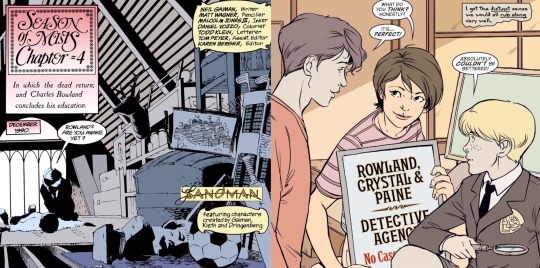
-

⏳ the sandman #25 (1991)
this is their first appearance!
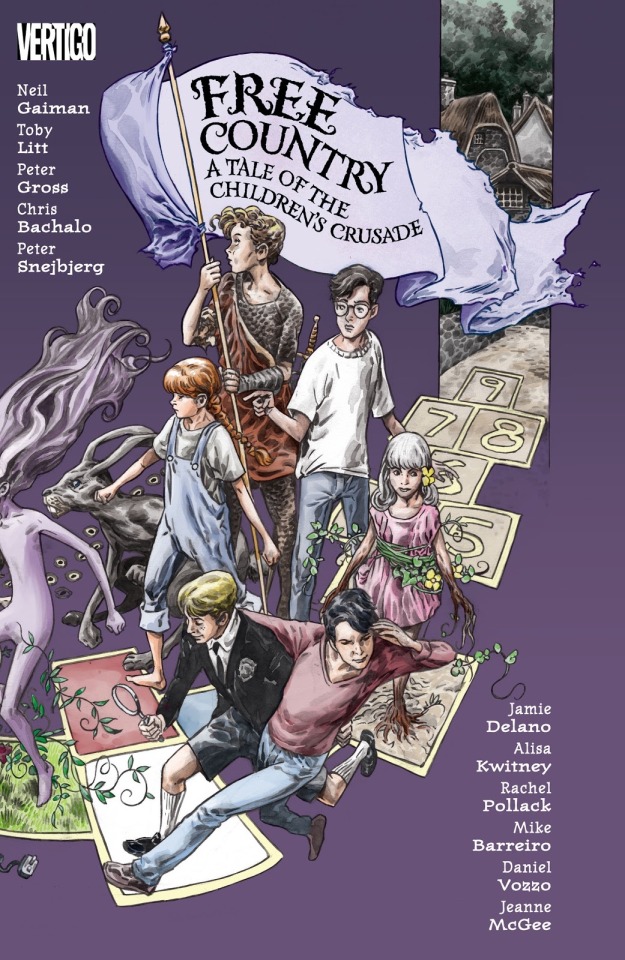
🐇 the children's crusade (1993)/free country: a tale of the children's crusade (2015)
1. the children's crusade #1
(2. black orchid annual #1
4. animal man annual #1
5. swamp thing annual #7
6. doom patrol annual #2
7. arcana annual #1)
8. the children's crusade #2
alternatively you can just read free country. whether or not you read the annuals i recommend reading free country's middle chapter
!!! in place of the annuals there is an additional middle chapter that was created for the book "free country: a tale of the children's crusade" where it is placed between the two children's crusade issues. the boys don't actually appear in most of the annuals (they are in two panels of swamp thing and appear in doom patrol) and reading them isn't necessary but i figured i would include them as they are part of the story.
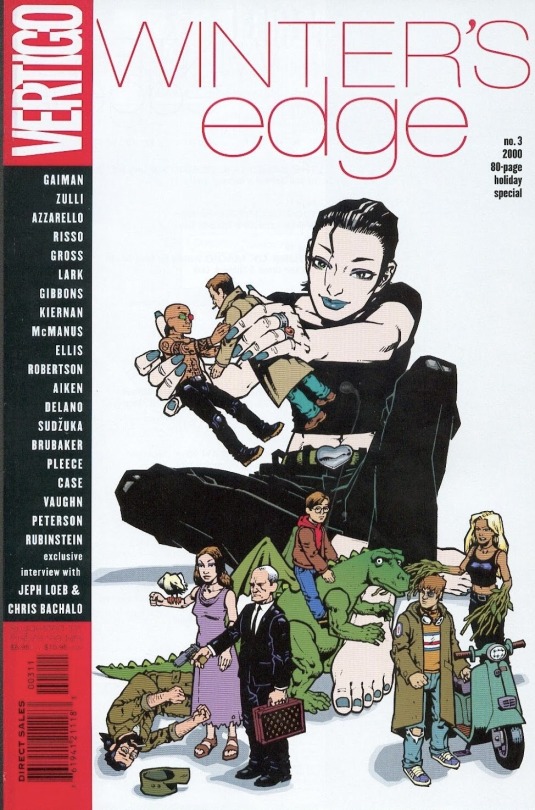
❄️ winter's edge #3 (2000)
this is an anthology. their part is the 'books of magic: waiting for good dough' story starting on page 19

🐦⬛ the sandman presents: the dead boy detectives (2001, 4 issues)
i believe the tv show's esther finch was partially based on this run's villain.
*
(they do have a part in 'death: at death's door' from 2003. it's short and really just a retelling of events from sandman #25 with some minor changes. the entirety of their appearance in death: at death's door is included at the end of the next comic im listing so i am not really adding the death: at death's door book to the list)
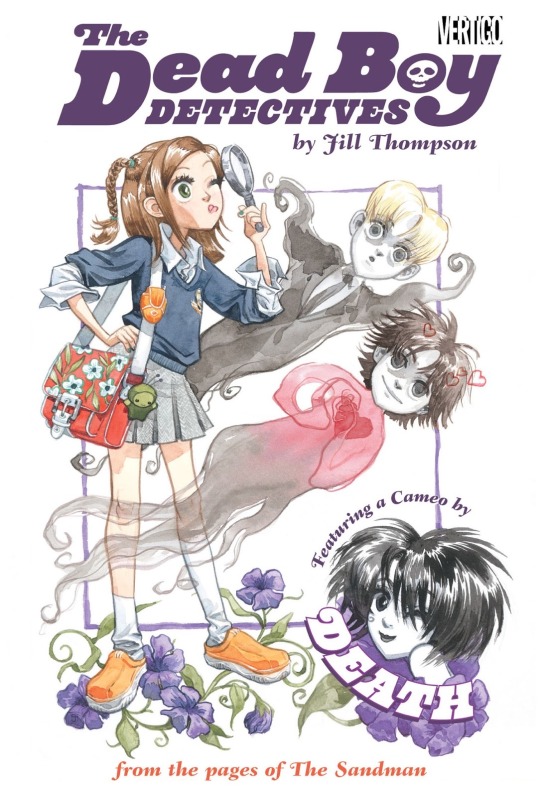
☠️ the dead boy detectives (2005, one-shot)
this book was made by jill thompson in a very cute manga-esque style

👻 ghosts (2012), time warp (2013), the witching hour (2013)
these three are anthologies. the story 'the dead boy detectives in: run ragged' runs through all of them. 'run ragged' kicks off the next run.

🔮 from the pages of the sandman: dead boy detectives (2013, 12 issues)
this is the comic where crystal is introduced! a book collecting all 12 issues titled 'dead boy detectives by toby litt & mark buckingham' was released in 2023
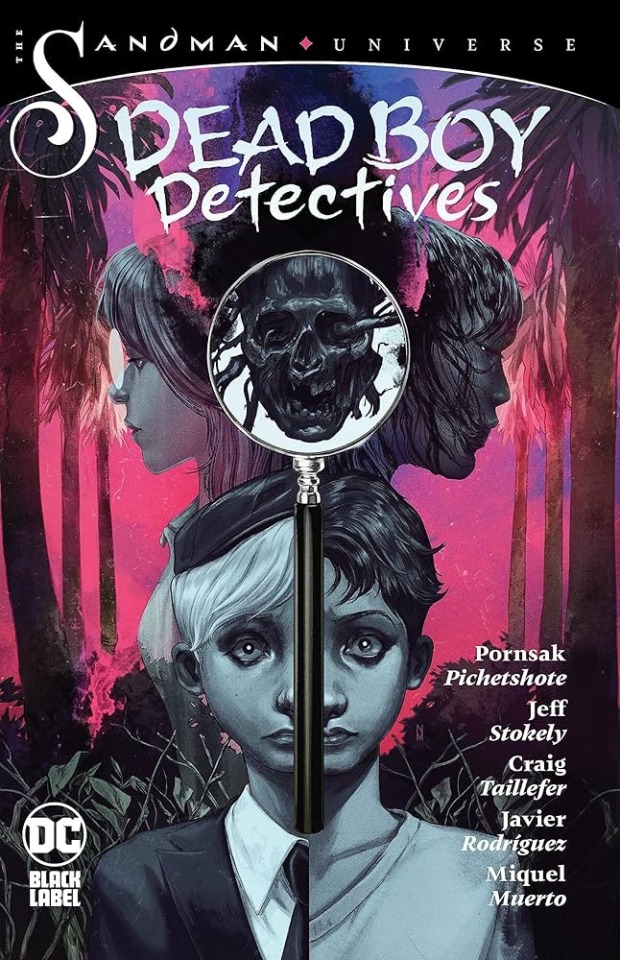
🔎the sandman universe: dead boy detectives (2022, 6 issues)
the most recent run, centered around some really interesting thai mythology and featuring multiple edwin moments that i am sure you will love
-
and that's everything! i also recommend buying the omnibus if you can. it includes everything minus the 2022 run plus some additional bonus content!

i hope this is helpful! feel free to ask me any questions you may have about the comics. dead boy detectives is my number one interest so i should be able to answer
have fun reading! 👻
#dead boy detectives#the sandman#the sandman universe#comics#reading list#edwin paine#edwin payne#charles rowland#crystal palace#crystal palace surname von hoverkraft#painland#paynland#i really hope i didnt mess up while making this post fjdkfkjdkf
1K notes
·
View notes
Text

happy Halloween! may it be spooky and fun >:)
#Halloween#worm on a string#autumn#fall#to anybody reading the tags: are there any movies you watch every year for Halloween? i have many the list is so long#any one that's particularly special to you?
5K notes
·
View notes
Text
So I made a Hozier reading list...
This is what I have so far.





For some books I'm still missing sources, and I know it's not complete or ✨️Aesthetic✨️. But if there is anything that you think should be on there, let me know.
6K notes
·
View notes
Text
got a worm nibbling my brain. can someone help me find a piece of obscure media?
webcomic/indie comic from the 2010s. basically a sci-fi short story about a young girl (with red hair?) who was being raised by scientists as part of an experiment. she receives a haircut/has her head shaved, in preparation for her annual brain scan/testing. it is revealed that while her body is human, her "brain" is artificial, made of computer implants throughout her skull and spine. at some point her biological mother (also a scientist on the same campus?) encounters her and is repulsed, viewing her as a machine who has murdered her daughter.
it was very poignant and it bruised my heart and i can NOT find it anywhere
#i thought it was made by the creator of 'O Human Star' for some reason but apparently not?#goddammit goddammit goddammit#'i don't have to write down the title of this piece of media i encountered in my formative years bc i'll always remember it'#*cut to ten years later frantic googling*#fun fact 'a.i.' is now a completely useless search term#google in general is useless#and stuff i read 3+ years ago regularly vanishes from the internet#bookmarks are not enough! if you like indie media--download that shit! buy digital/physical copies while you can#save it to the cloud back it up and organize that shit!!!#keep a list of the stuff you read (organized by date/media type and possibly with keywords if you want it to be useful longterm)#(or a spreadsheet even if you're like me and rabidly consume short stories/comics like a pack of amnesiac piranhas on a feeding frenzy)#(that stuff PILES UP over the years ok. if you wanna make sure you'll be able to find it again a decade later--curation is key)#because art WILL touch your soul and then vanish into the void leaving naught but a 404 Error in its wake#i am an old man shaking my fist at the kids on my lawn but the kids on my lawn are me and my longterm digital planning skills circa 2012
3K notes
·
View notes
Text
everyone makes fun of soap when they find out how many hair and skin products he keeps on hand. the cabinet in his bathroom is filled to bursting and he always keeps travel sized bottles on him on missions
when soldiers outside the 141 find out, they call him precious and self-obsessed, a vain pretty boy too preoccupied with his reflection to focus on the enemy. no wonder how he got his callsign. price has given up telling him to leave them on base and just teaches him to individually wrap them so they don’t rattle against each other and give himself away
what they don’t know is that each product contains an ingredient that when mixed with any number of the others, creates potent chemical bombs. he was caught unarmed once, he won’t let it happen again
#ghost picks it up when he watches him meticulously read the ingredients lists on the bottles when he goes shopping with him once#he knows enough about products to know that when you find one that works you keep using it#so hes confused when he sees soap put back a moisturiser hes certain hes seen in his little bag#he waits for him to leave the aisle and checks the bottle#which is when he sees the new and improved formula sticker on the back#he memorises the ingredients and when he checks the bottle in soaps room sure enough theres an ingredient missing#thats when he puts it together#it seems his little intro into guerrilla warfare had sparked some ideas in his sergeant#and hes so damn proud it takes him off guard for a second#he hadnt expected him to keep up with it not when hed rarely need the knowledge#but he is and hes doing it all on his own using his own expertise and forethought#the pride has to make room for a difference kind of warmth at the sheer competency on display in front of him#the next day he drops a new product with the missing ingredient on soaps head#the soldiers around them are shocked that hed indulge in soaps prissiness#hes the only that that sees the feral glint in soaps eye as he thanks him and starts going on about the benefits of looking after your skin#coming out of my cage and ive been doing just fine.txt#ghost x soap#soapghost#ghostsoap#ghost mw2#cod ghost#cod soap#soap mw2#soap mactavish#cod mwii#call of duty#we’re a team. ghost team
5K notes
·
View notes